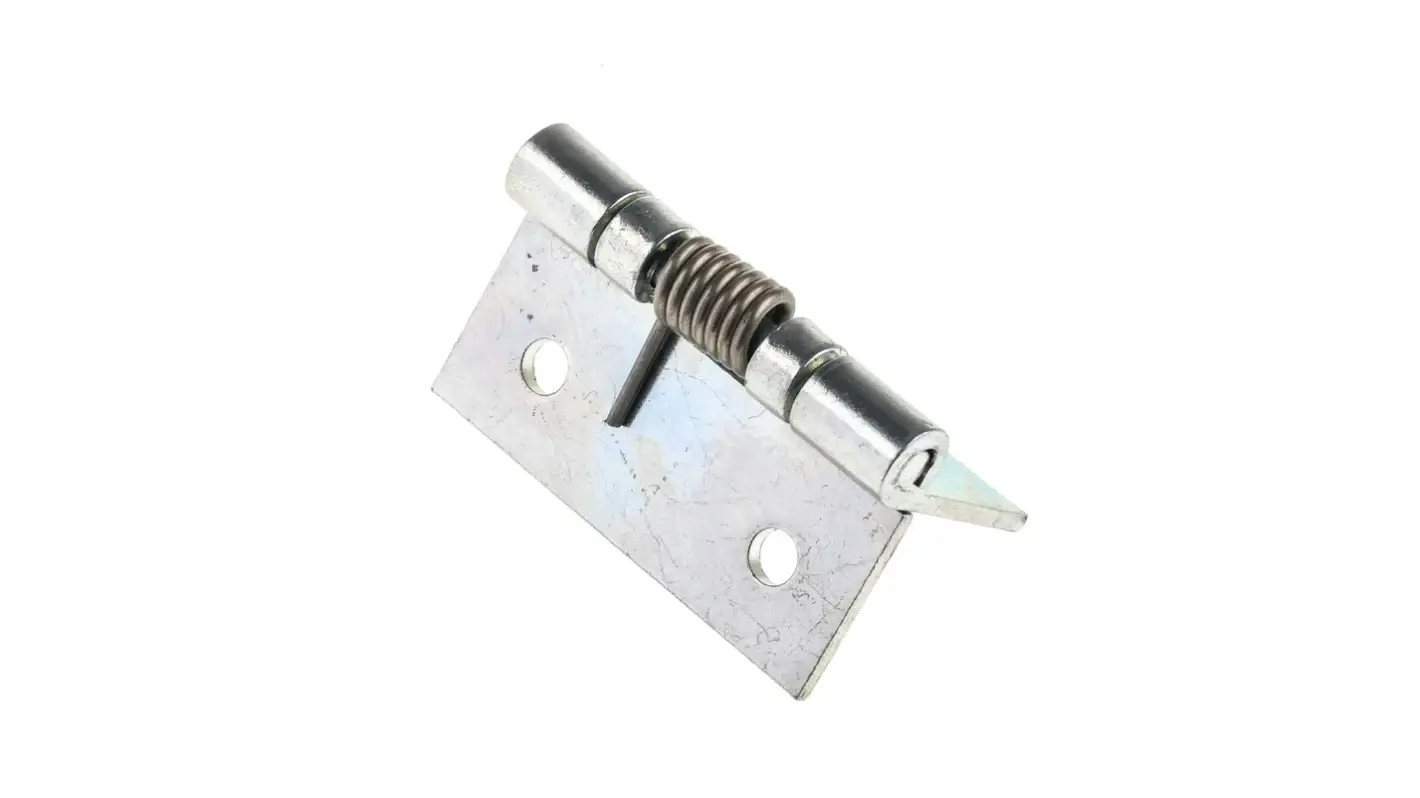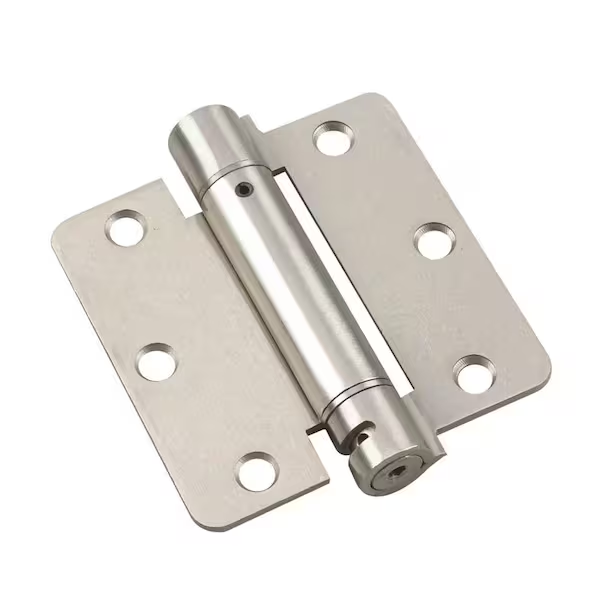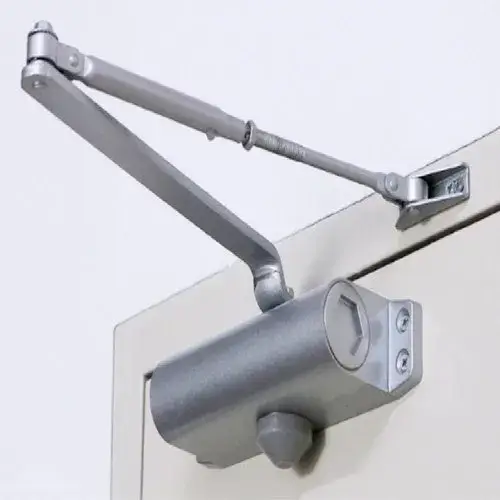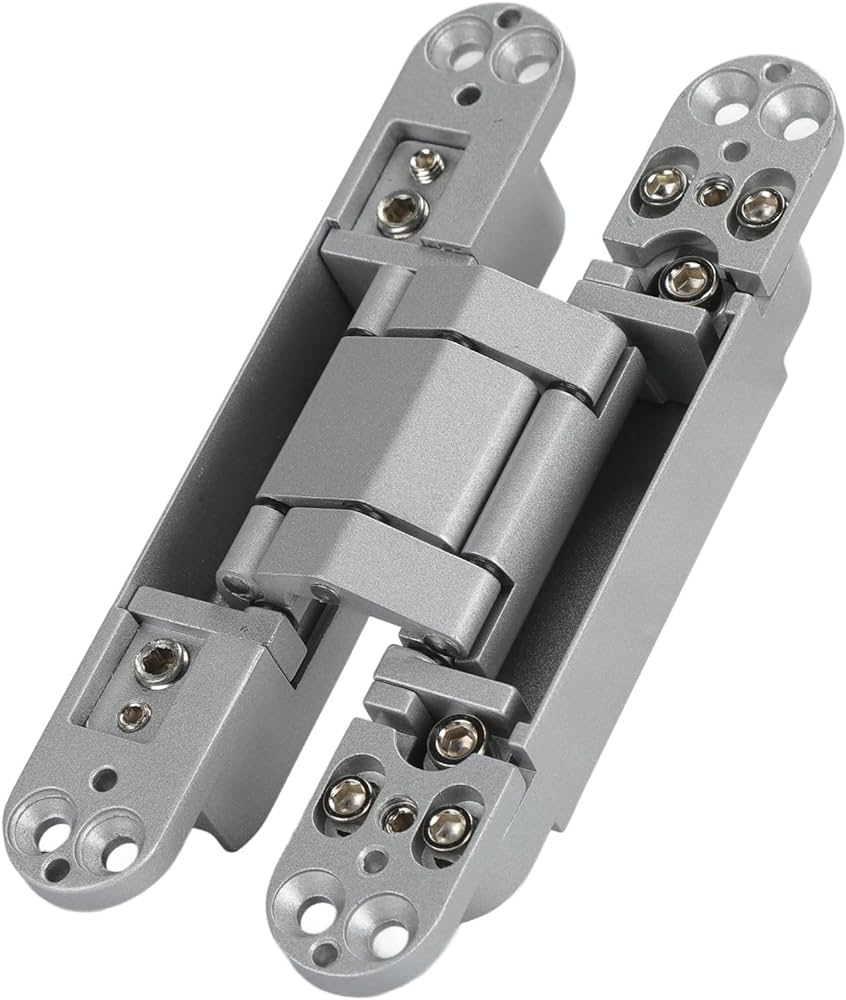Automatic closing door hinges use an internal spring or hydraulic mechanism for heavy or large doors to automatically close the door after it is opened, providing long-term strength and reliability.
Self-closing door hinges work by compressing a spring or activating a hydraulic mechanism when the door is opened. The stored energy in the mechanism is then released, allowing the door to close safely. Hydraulic hinges are composed of basic components with hydraulic fluid, which plays an important role in facilitating the function of the mechanism, similar to blood in our body’s circulatory system.
Hydraulic hinges effectively automate the closing of the door and safely maintain specific open positions without slamming. They are ideal for precise control of hinge operations and are commonly used on both interior and exterior doors.
Self-Closing Door Hinges:

1. Spring Hinges
Spring hinges are common types that have an internal spring mechanism that creates tension and allows the door to close automatically. They are easy to install and suitable for a variety of environments.

2. Adjustable Tension Spring Hinges
These hinges use built-in springs to self-close, like spring hinges, but have adjustable tension for customized closing force. This versatility accommodates doors of varying sizes and weights.

3. Hydraulic Self Closing Hinges
Self-closing Hydraulic hinges offer a compact and innovative solution for smooth door closing, combining the functions of a door closer, stopper, positioner, and damper in a single unit. Their design eliminates the need for traditional hydraulic closer arms, allowing compatibility with various door styles, including screen doors.This technology is particularly beneficial for spaces where traditional door closers may be cumbersome or unattractive, offering a sleek and efficient alternative. Whether in residential homes or commercial settings, self-closing hydraulic hinges provide a seamless operation that enhances overall convenience and safety.

4. Hydraulic Door Closers (Overhead Door Closers with Lever)
Hydraulic door closers use fluid-based technology to control the speed and force of the door closing. They allow for adjustable closing speeds and are often used in high-traffic areas or where precise control of the closing speed is important, and they offer a smoother, more controlled closing motion than spring hinges.

5. Pivot Hinges
Pivot hinges, unlike standard hinges, are installed at the top and bottom of doors to provide pivoting rather than traditional opening and closing. Some have self-closing mechanisms that automatically return the door to the closed position. Often found on modern or architectural door designs, pivot hinges offer a distinctive aesthetic.

6. Hidden Hinges & Concealed Hinges
Hidden hinges, or invisible hinges, are installed so that they are hidden when the door is closed, providing a sleek, minimalist look. Some of them have automatic closing door hinges features, thus providing a perfect appearance.
